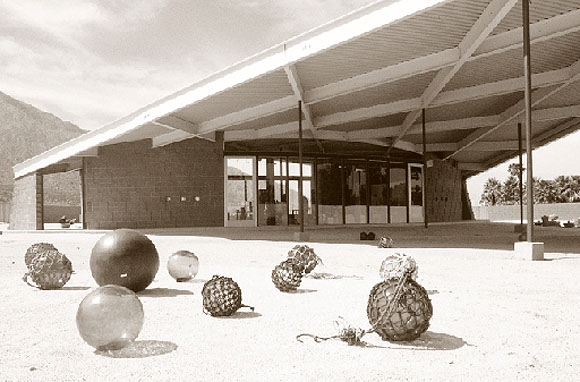Anyone who has entered Palm Springs from metropolitan Los Angeles via Highway 111 has probably taken notice of the unofficial, yet much recognized, gateway to the desert region of the Coachella Valley: a structural sculpture comprised of a wing-like roof perched on slender pipe columns and concrete block walls the shade of red desert rock. This structure, more roadside monument than building, was designed as a gas station by architect Albert Frey (1903-1998) and sat uninhabited for years. Frey, a protégé of Le Corbusier, settled in Palm Springs in the 1930’s and became renowned for residential and commercial buildings that have become the staple of a style popularly known as “Desert Modern.”
Recently, the building was purchased and carefully renovated into a private art gallery, “Montana St. Martin.” A striking white wall now encloses the structure and an outdoor sculpture garden, while allowing the signature roofline, still visible from the highway, to hover. Large expanses of glazing now enclose the original portals for the station garage. Frey’s thoughtful patterning of concrete block creates a refined interior where any mechanic (or art dealer) would be proud to work.
Photo by Anne Zimmerman, AIA.
Author Lisa Padilla, AIA, is an associate partner in the Los Angeles office of Zimmer Gunsul Frasca Partnership, where her project focus is urban design and master planning for public and private institutions. She is a member of the arcCA editorial board.
Originally published 1st quarter 2001, in arcCA 01.1, “Awarding Honor.” Re-released in arcCA DIGEST Season 17, “Adaptive Reuse.”






